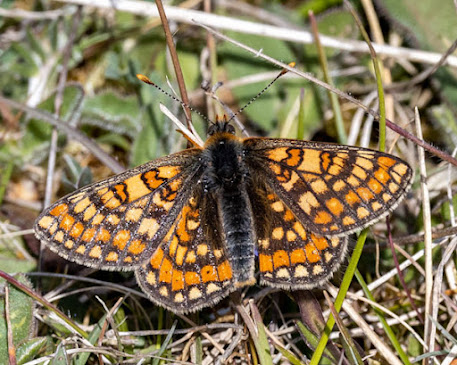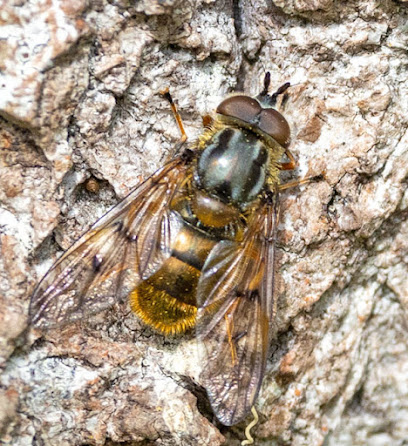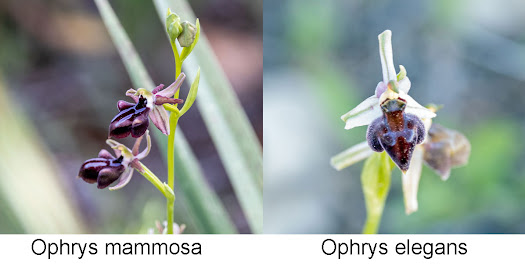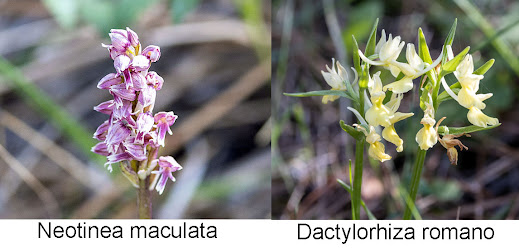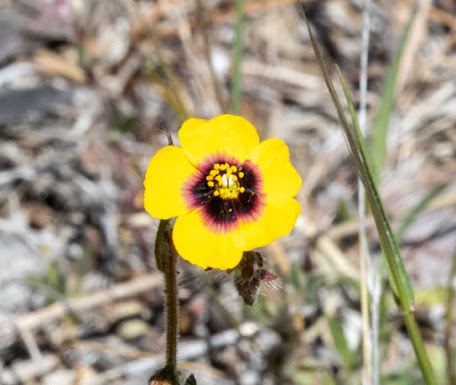May birding started for us on the 3rd, at home whilst doing home chores and taking it easy to allow my injured calf muscle to heal we were monitoring what was coming into the feeding station and moving overhead. The highlight was four Red Kite that glided over heading east.
Traditionally Siskin visit the garden feeding station in the early new year and leave come spring but over the last couple of years we have a short break then we have been having a pair visit the feeders and continue throughout the breeding season. So they are obviously nesting fairly close-by. Also the Cetti's Warbler seems to have extended it's territory and is coming right up to just opposite the garden from right on the Lytchett Bay View observation point as he has been blasting out its song regularly for weeks now.
On the 4th we had a call from Ian to say the Little Gull was back in the bay view from Rock Lee View Point. So Jackie and I popped down the road to see if it was hanging around. On our arrival Pete Corbin was at the view point and said it was flying up and down in the next channel but was hard to see. After a while Jackie found it out over the bay though at some distance but we had good scope views enough to be able to add it to the patch year list.
On the 6th we visited Arne with friends and had a gentle walk to the Lookout hide and then continued on around Coombe Heath. The only birds of note was the usual Dartford Warbler and a Goshawk was picked up soaring high and drifting off slowly towards Corfe Castle. We also added one Dragonfly Hairy Dragonfly and Large Red Damselfly to the Odonata year list. We also had a female Large Velvet Ant which isn't a ant but a wingless wasp though the male does fly but they are a cracking looking insect.
Next day 7th May we headed off to Martin Down, we found few bird species but this visit was for butterflies rather than birds. We did pretty well finding twelve species but the out standing species was Marsh Fritillaries as they were everywhere. I counted 40 just where I walked and that it way below what was present over the site. Dingy and Grizzled Skipper, Common and Small Blue, Small Heath and Green Hairstreak were nice to catch up with among the commoner species seen.
The weather was still good so on the 10th Jackie and I went off to Durlston CP. in the hope there would still be an odd Spider Orchid to be seen. We walked from the car park along the ridge heading west and what was noticeable straight away was the number of Common Whitethroat that were singing all along the ridge.
As we walked on Jackie and I spotted a butterfly which we both thought initially was a fritillary then we quikly realised it was a Wall and I managed a quick shot of it as it briefly landed on the path. This is a butterfly that we do not alway get but the Purbeck coastal ridge is a place to find them.
We arrived at the area where we usually start finding the orchids and indeed we saw Early Purple Orchids dotted around and then up on the top of the ridge where their is some old quarrying I found a Early Spider Orchid and a minute or two later another but not surprising really they were almost over with just the last uppermost flower head being in good condition. By the end of the walk my calf muscle was telling me I had done enough. So Jackie and I went to the Castle for breakfast but it was packed and the service was slow. So we headed back to the van and I had the idea of going to the Kitchen cafe at Hartland Stud which we did and had one of their breakfast baps which was a little naughty but very nice.
On the 14th Jackie went out with her sister in law so I joined Terry and Kat for a reptile survey on the Purbeck NNR. Though because of my injury I didn't do all of the survey area just a few covers that were easy to get to I let them do all the rough terrain covers. Instead I walked the paths and searched for Heath Tiger Beetle and other scarce inverts that should have been emerging particularly in such good weather condition that we had been having. My find of the day was probably the first Mottled Bee-fly of the year and under two of the covers I managed to get to we had a Smooth Snake under each which is always nice to find.
On the 17th Jackie and I were up early and set off to the East Riding of Yorkshire for the week. This is an area we go most autumns for the migration festival but have never visited in the spring/summer and Jackie wanted to see the Bempton Puffin and Gannets. Our journey took a lot longer than anticipated so we went straight to our cottage in Flamborough village.
Next day we started at Thornwick Pools, there wasn't much present but we did add some species to our East Yorkshire list having not been up in spring before so House and Sand Martin and Reed Warbler and a Greenshank were an ok start for the day. As we were leaving news came on to say the Great Reed Warbler was still at Hornsea Mere and as we got back to the car park we ran into Tony and Jo and the Flamborough ringing group so we had a quick catchup and Tony told us where we needed to be to get the Great Reed Warbler and we headed off to Hornsea. We parked up in the housing estate and took the short walk to the first field at the end of the houses along the main road. As soon as we arrived in the field both Jackie and I said I can hear it singing. We walked to the hedge which lined the reedbed but there was no way of seeing through to where the bird was perched. I made a recording of it's song but it was only using the mobile phone so it's not brilliant. We then went around to the Mere cafe car park but it was closing so we headed back to Flamborough.
Next day we decided to head back to Hornsea Mere and parked up near the cafe and scanned the mere to see if we could find the Garganey. First notable species I found was a Little Gull sitting on one of the boating buoys. Scanning the far shore we couldn't find the target duck then a local birder came by and told us though the duck roost out near the far shore they move across the mere in the morning. So we went to the end of the car park and scanned around the island and almost the first bird I picked up was a male Garganey. Job done it was then off to the supermarket to get lunch and evening meal supplies and off to Top Hill Low. We had our lunch and then set out around the reserve at the first hide we were serenaded by Marsh Frogs and we watched a Great White and a Little Egret fly in and a Marsh Harrier drifted past. The next hide was more productive we added Common Terns, Common Sandpiper, a pair of Marsh Harrier a pair of Little Ringed Plover and a pair of Yellow Wagtails were the highlights. On our walk back we came across a couple of Northern Marsh Orchid. What was also very obvious here was the number of Willow Warbler they seemed to be singing everywhere unlike in Dorset.
On the 20th I decided that I didn't want to do a lot of driving so we headed just up the road to Bempton RSPB. The Gannet and the auks colonies interspersed with Kittiwake and Fulmar is a real spectacle and Jackie and I saw several Puffin, Razorbill and Guillemot on some close nesting banks at the clifftops. We spent a lot of time watching Gannets flying in to collect grass for their nests. They were ripping bills full of grass from the clifftop and the areas where they had already stripped looked like someone had cut it with a lawnmower. I took loads of photographs of them coming and going. I also found an area where I managed some shots of the Kittiwake's, Fulmar's and Puffin flying in to their nest below on the cliff face.
 |
| Gannet dropping in to get nesting material on the Clifftop © Nick Hull |
 |
| Kittiwake coming into land at its nest site © Nick Hull |
We also caught up with the Bempton Tree Sparrows which were as usual flying to and fro from their nest boxes to where they were feeding.
Whilst at Bempton we had a chat to one of the local birders whom we had met a few time in past years whist up in the autumn vis-migging etc. During our chat he mentioned Wykeham for Honey Buzzard and said they had arrived yesterday. So for the afternoon we decide to head for Wykeham. We managed to find the forestry raptor watchpoint without too much problem. We joined four birders at the watchpoint and was told they had seen to female around ten minutes earlier but they thought she was still around. I suppose it was about ten minutes later when a young couple standing to our left picked up the female Honey Buzzard heading towards us over the forest to our right. She finally came into our view circling over the pine trees and she just kept coming until right over us before circling back the way she had come. Some time later we picked up another much paler bird but much higher up gliding away from us which we were told by a local birder was the male who had only arrived back that morning and he said the female was seen for the first time the previous day. So we were pretty lucky to be around at the right time, not our usual luck.
Before we left we chatted to the young couple and when we said we were trying to add a few species to our Yorkshire list they ask if we had seen Dipper and told us to go to Thornton Le Dale which was not far down the road. So twenty minutes later we were parking up in Thornton and walking along the beck that runs through the village. We didn't have to walk far when I picked it up under one of the little bridges which give access to the houses.
On the 21st we headed up on to the moors not far from Pickering though we had some trouble getting there as the route we were given was ok to the point where we only had half a mile to go and the road was closed. So we had to retrace our route and go around five miles to reach the parking area and almost to where we were told to park there is another road closed sign but I decided it was to hard to turn the van around at that point so drove on and we stopped to scan across the moor at various places until I found a suitable turning place. It was at one of these stops that I noticed a bird flying towards us and it landed almost next to the van. It turned out to be a Snipe and we watched it feeding ravenously in amongst the heather before it flew back from where it had come from presumingly to feed young.
Well, lo and behold the road was open right up until we reached the car park where we were instructed to park. From here our instructions said take the gravel track to the bench and you should see Red Grouse possibly Golden Plover etc. In fact we hadn't walked more than a hundred metres when we could hear Golden Plover plaintive calls coming from somewhere up on the moor and then I spotted a female at the side of the track which gave us nice views before she flew back up onto a grassy patch amongst the heather. We walked on to the bench and a pair of Greylag Geese, Meadow Pipit and a displaying Curlew were the only species seen, we put this down to the wind which was blowing a gale keeping the birds heads down.
By now it had been a long time since breakfast so we decided to go back to the van and have lunch and to decide what to do next. On our return walk we spoke to a couple of ladies who had asked us what the little speckled breasted birds were which were Meadow Pipit and they said did you see the Red Grouse near the parking area they were calling when they arrived. On our return walk we had some luck as we had a pair of Merlin having a go at a Buzzard before heading off up the valley. Just before we made it back to the van I picked up a movement and it turned into a female Wheatear which was nice but we were still missing out on grouse.
We were siting in the van enjoying the warmth and shelter from the wind and halfway through a sandwich I noticed out in the heather about 50m away a dark red rounded stick pocking out of the heather which didn't seem right then it disappeared and then reappeared, a Red Grouse! I directed Jackie onto it and we watched briefly the bird moving through the heather. With lunch finished I moved the van little way up the road and we scanned again across the heather in the area where we saw the grouse and there 1 then 2 then 3 came into view and then Jackie found another on the left of the road which was a little closer and I spotted two possibly three chicks with her which made a excellent end of birding here on the moor the only missing species was Ring Ouzel but you have to leave something for an excuse to return another day.
On the 22nd we needed provisions so we decided to have an easy day and popped to Hornsea to see if I could getting a better audio recording of the Great Reed Warbler but it didn't sing at all I think we were to late in the morning, but we added Sedge Warbler. So it was to the supermarket then back to Flamborough and after lunch to Bempton for a afternoon walk. It was very busy and we didn't add anything to our list until that night when just around bedtime we heard a Tawny Owl calling in the tree behind the cottage.
Next morning 23rd we had a lay-in, then had a walk locally along the footpath and was able to add a flyover Grey Heron and Yellowhammer to the holiday checklist. After we went off to Flamborough South Landing and had a walk around the reserve. We didn't add anything to our checklist but had a very nice walk. We ended the day at Flamborough Head doing a sea watch from the car park sitting in the van after a couple of hours we gave up and went back to the cottage for evening meal and an early night as next day we were travelling home back to Dorset.


